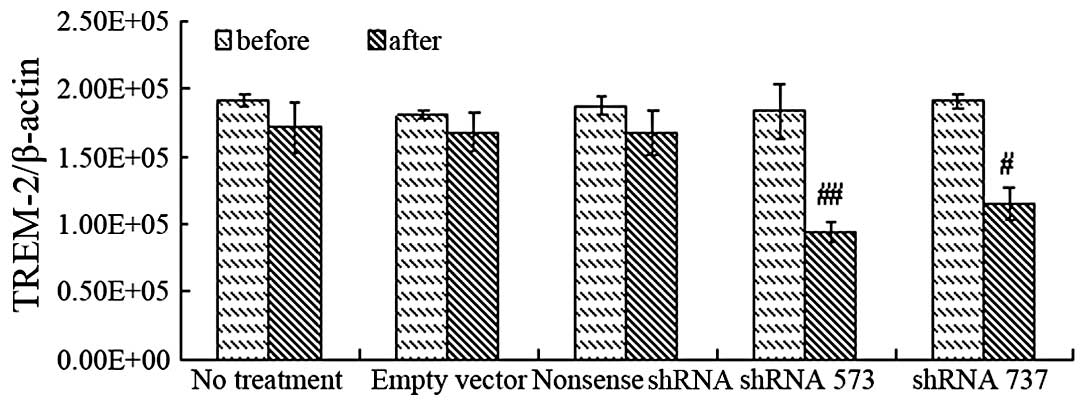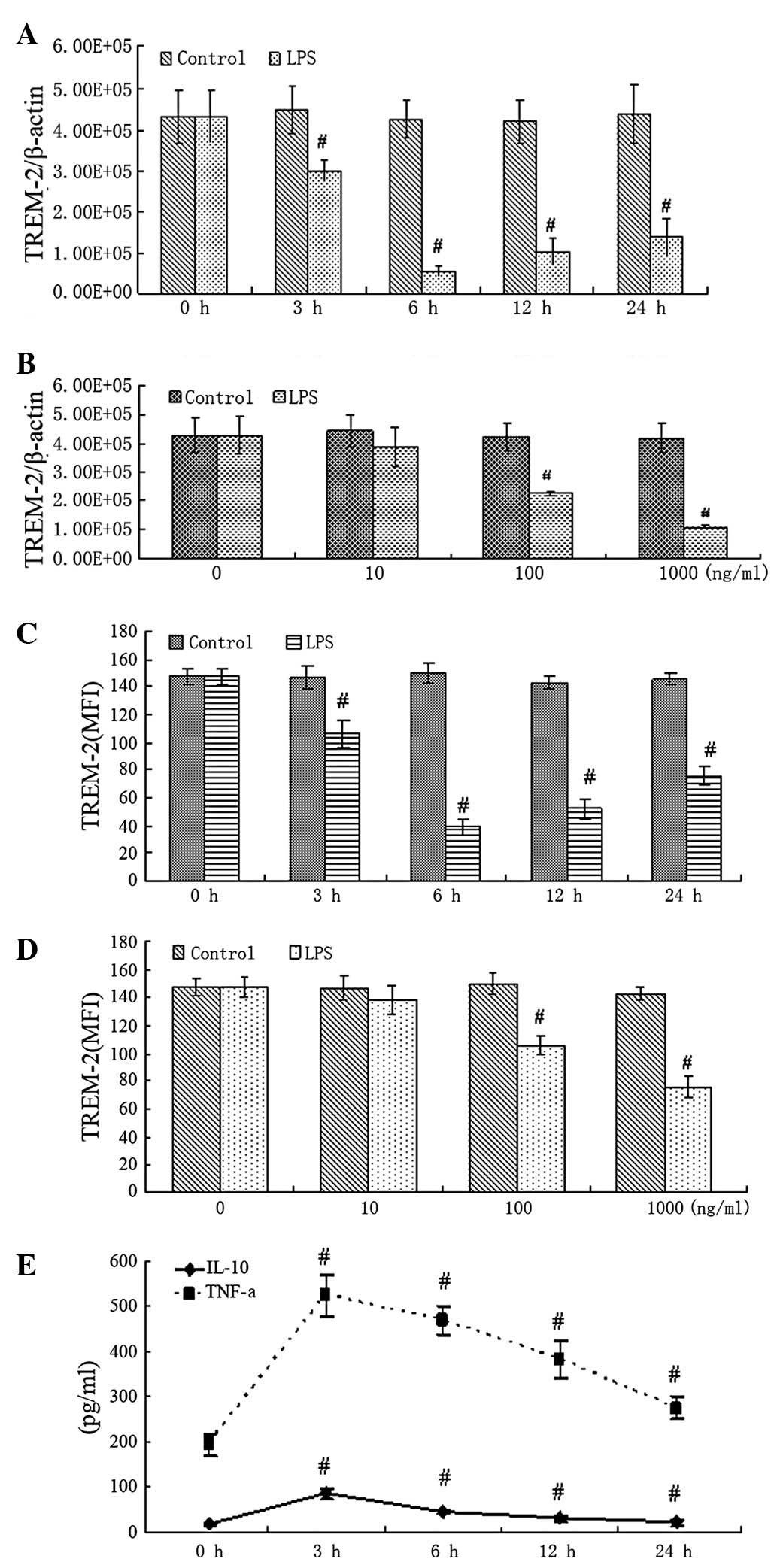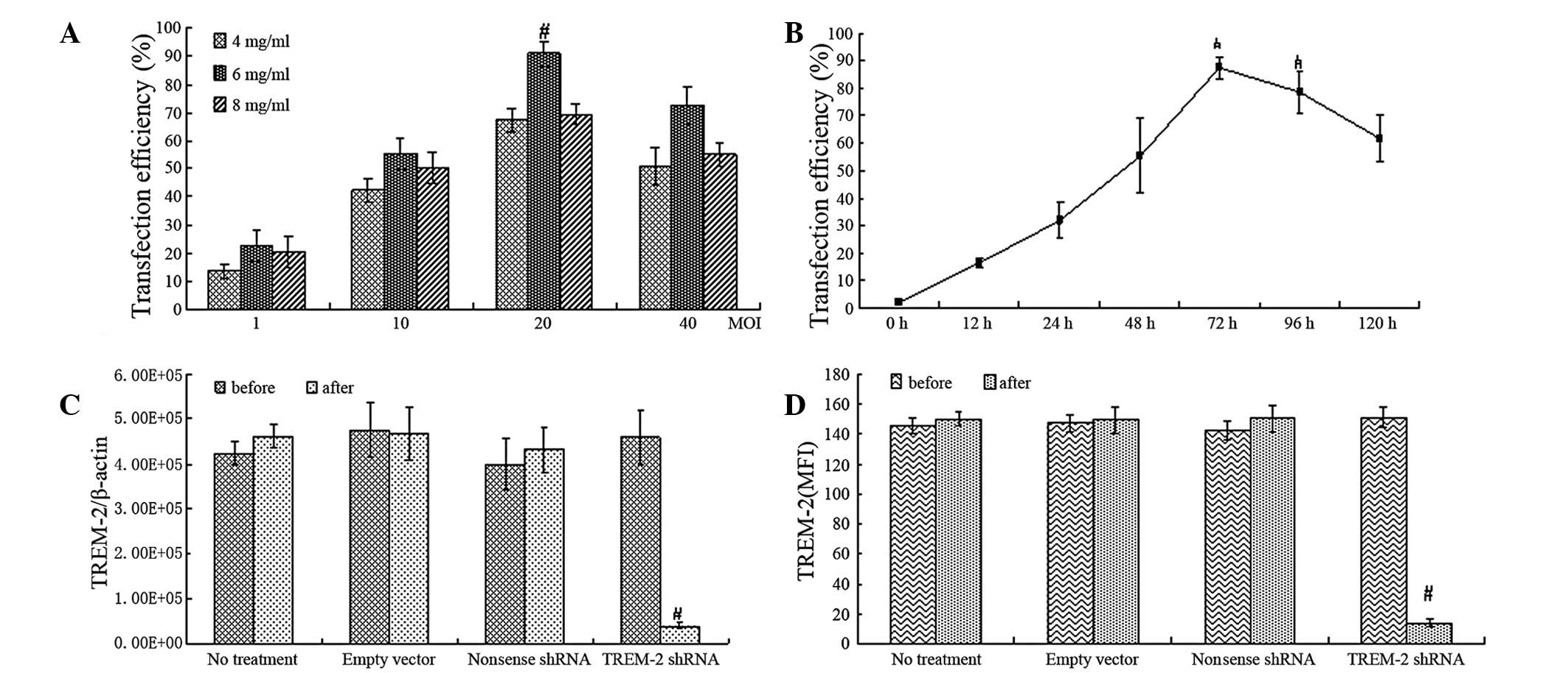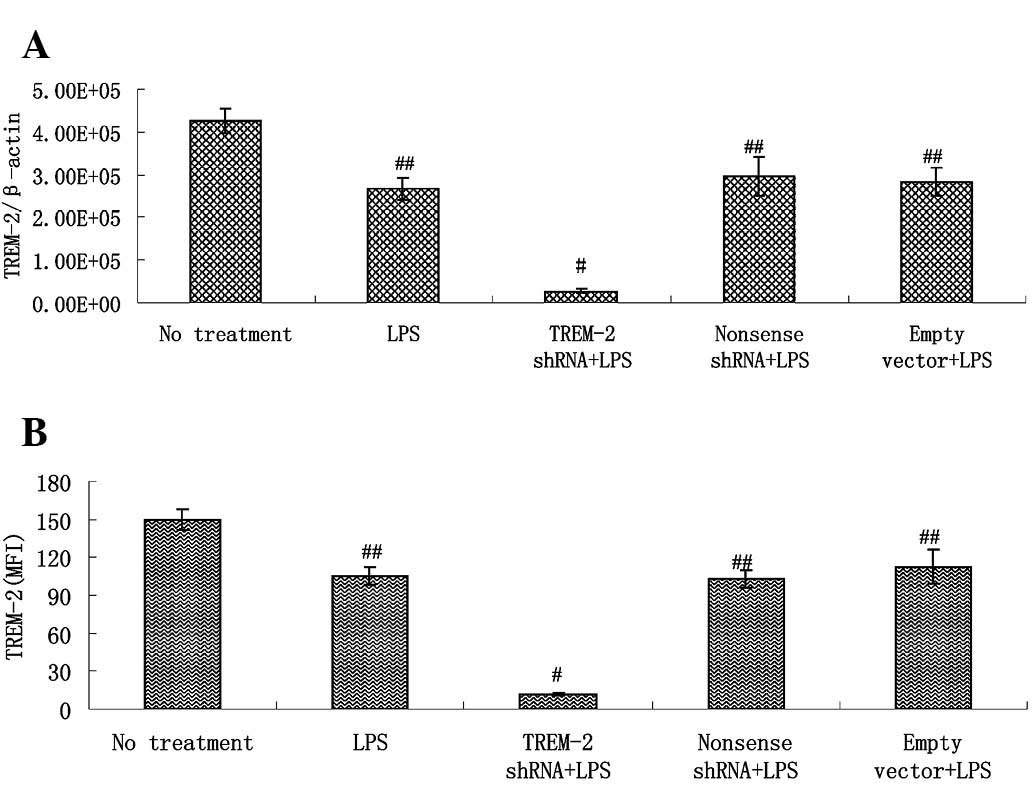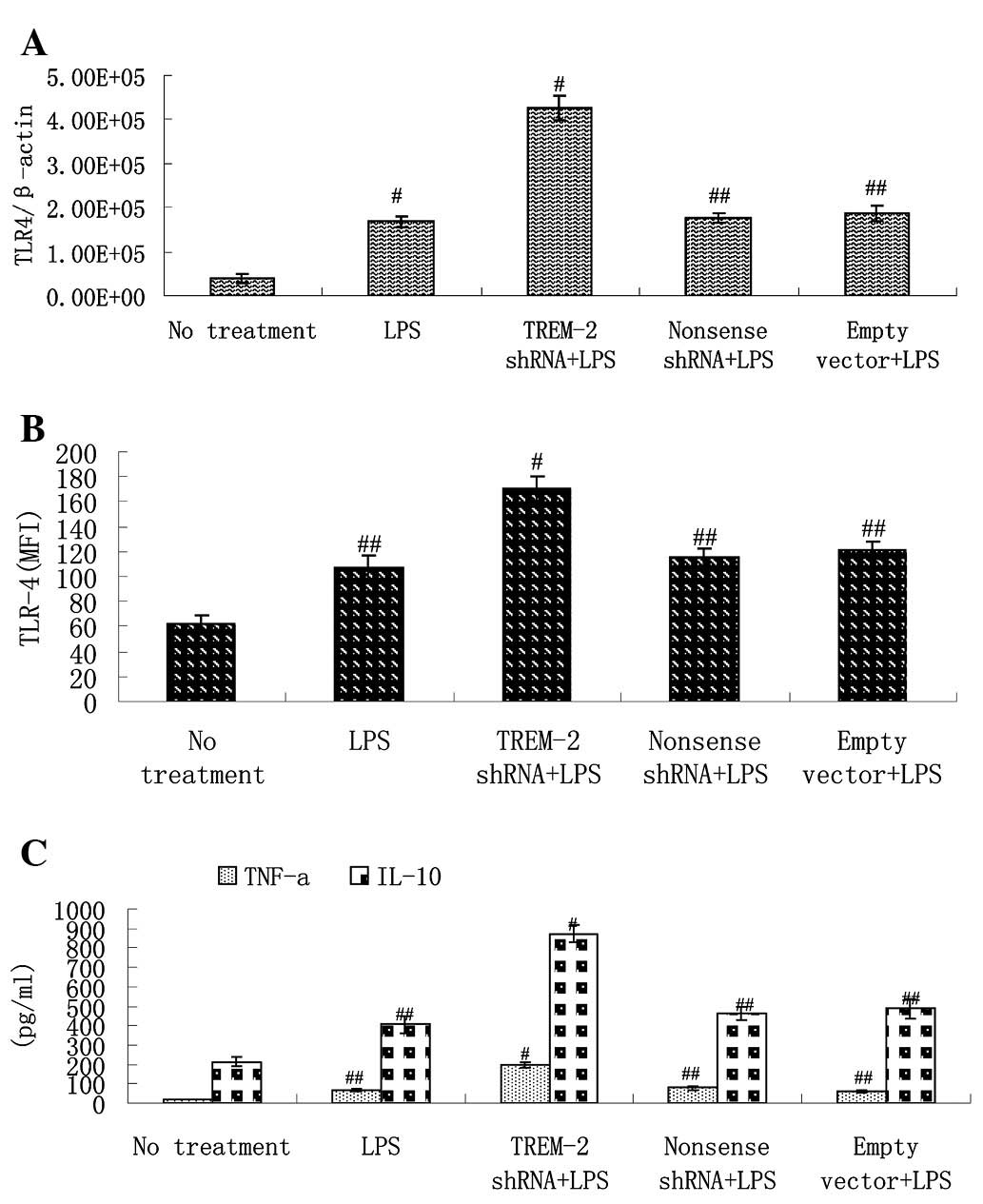Silencing of triggering receptor expressed on myeloid cells-2 enhances the inflammatory responses of alveolar macrophages to lipopolysaccharide
- Authors:
- Published online on: January 10, 2013 https://doi.org/10.3892/mmr.2013.1268
- Pages: 921-926
Metrics: Total
Views: 0 (Spandidos Publications: | PMC Statistics: )
Total PDF Downloads: 0 (Spandidos Publications: | PMC Statistics: )
Abstract
Triggering receptor expressed on myeloid cells-2 (TREM-2) has been shown to attenuate inflammatory responses in various cell lines including bone marrow-derived macrophages, hepatic macrophages, osteoclasts and dendritic cells. However, its effects on alveolar macrophages remain unknown. Lentivirus-mediated RNA interference (RNAi) is a post-transcriptional gene silencing method, which is capable of degrading target genes specifically and efficiently. In this study, we silenced TREM-2 in murine alveolar macrophages by using lentivirus-mediated short hairpin RNA (shRNA) and evaluated the effects of TREM-2 silencing on expression of toll-like receptor-4 (TLR-4), tumor necrosis factor-α (TNF-α) and interleukin-10 (IL-10) in response to lipopolysaccharide (LPS). Alveolar macrophages were transfected with shRNA targeting TREM-2 by use of lentivirus vector, non-sense shRNA as a negative control or empty lentivirus vector as a blank control. Silencing of TREM-2 was assessed by real‑time fluorescence quantitative PCR and flow cytometry. Following LPS stimulation, the levels of TLR-4, TNF-α and IL-10 expressed in alveolar macrophages were measured by real-time PCR, flow cytometry or ELISA. TREM-2 expression on alveolar macrophages was downregulated significantly by lentivirus-mediated shRNA treatment at the transcriptional and translational levels. However, alveolar macrophages that received non-sense shRNA or empty lentivirus vectors showed no effects on TREM-2 expression. Silencing of TREM-2 enhanced expression of TLR-4, as well as TNF-α and IL-10, by alveolar macrophages following LPS stimulation. These results indicate a significant effect of TREM-2 on attenuating the LPS-induced inflammatory response of murine alveolar macrophages, which may be dependent on TLR-4.



